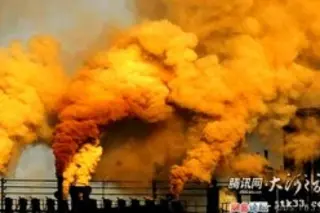Chinese pollution. Photo by Robert Gagnon via Flickr I'll say it again: You can sympathize with the people who drank the water and abhor the polluters and still not be persuaded that there was a cancer outbreak. That sums up the message of my recent posts on Erin Brockovich and the article I wrote for Slate on the Toms River cancer cluster. It could apply just as easily to the case in Woburn, Massachusetts, which was made famous by Jonathan Harr's book, A Civil Action. Woburn and Toms River are the only two places in the United States where epidemiologists have found an association -- a very murky one -- between pollution and cancer in some of the residents. Both incidents involved childhood leukemia, and the number of excess cases finally attributed to toxic effluents was about half a dozen in each town, occurring over a period of 10 or ...
An Epidemiologist's Nightmare
Explore the intricate Toms River cancer cluster controversy, linking pollution and childhood leukemia to environmental studies.
More on Discover
Stay Curious
SubscribeTo The Magazine
Save up to 40% off the cover price when you subscribe to Discover magazine.
Subscribe













